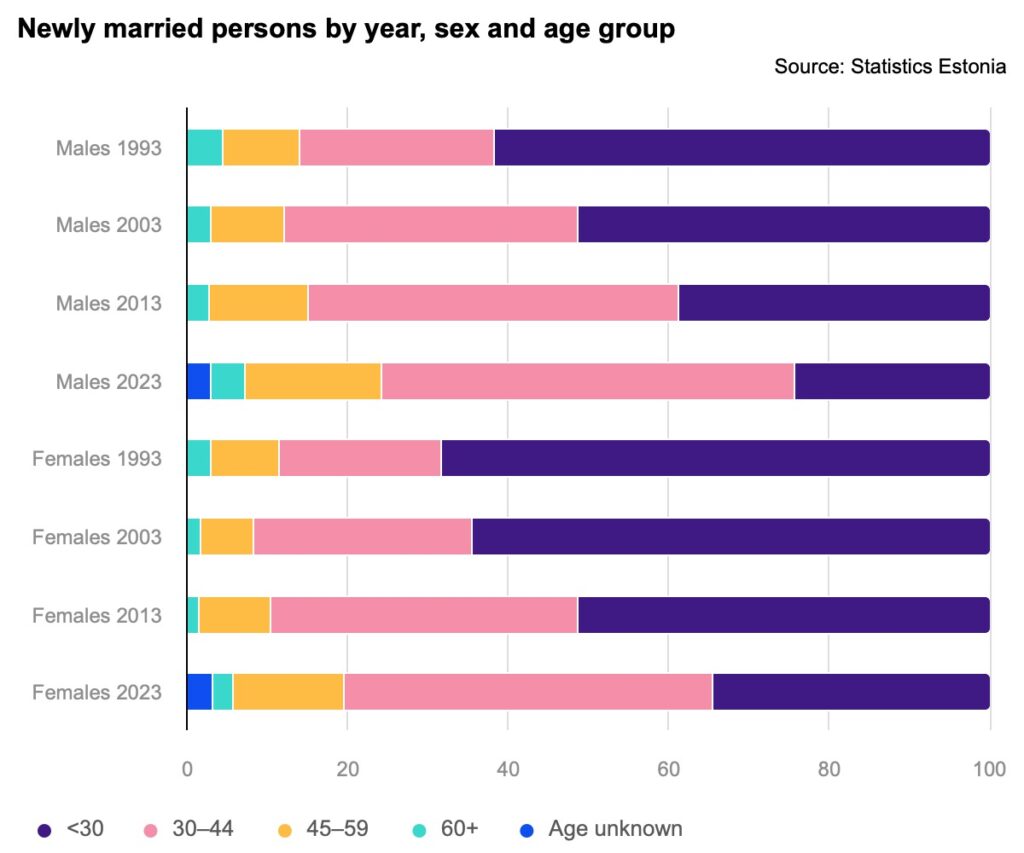In 1993, between 60% and 70% of people getting married in Estonia were under 30; by 2023, just 24% of newlywed men and 34% of women were under 30, according to Statistics Estonia.
“The share of 30–44-year-olds among newlyweds has nearly doubled in the past three decades,” said Henry Lass, an analyst at Statistics Estonia, the country’s official statistics agency. “Back in 1993, just 24% of men and 20% of women married in this age group. By 2023, the figures had climbed to 51% and 46%.”
Marriage has also been on the rise among 45–59-year-olds, showing that in Estonia, tying the knot is becoming more of a midlife milestone.
“Only 10% of newly married men were aged 45–59 back in 1993,” Lass said. “For years, that number barely budged, staying between 9% and 12%. But by 2023, it had jumped to 17%.”
Women have followed a similar pattern – though a little more cautiously.
“From 1993 to 2013, fewer than one in ten newlyweds were women aged 45–59. By 2023, the share had grown to 14%,” Lass noted. Still, women in this age group remain slightly less likely to walk down the aisle than their male counterparts.

Men over 60 more likely to marry than women
Marriage is no stranger to Estonia’s over-60s – but the difference between men and women at this age stands out. In 1993, 341 men and 228 women aged 60 and over tied the knot. The gap remained in 2023, with 282 men and 178 women marrying.
Later marriages are often remarriages. In 2023, the average age of a remarried man was 45.2 years and that of a woman 41.5. Around 30% of newlyweds had been married before.
“The percentage of remarried people hasn’t changed much – if anything, it has slightly declined,” Lass noted. In 1993, 32.4% of newlywed women and 32.6% of men were remarrying; by 2023, the figures had dropped to 30.8% and 29.4%.
The most popular dates for marriage in 2024 were 8 August, 24 April and 24 July.

